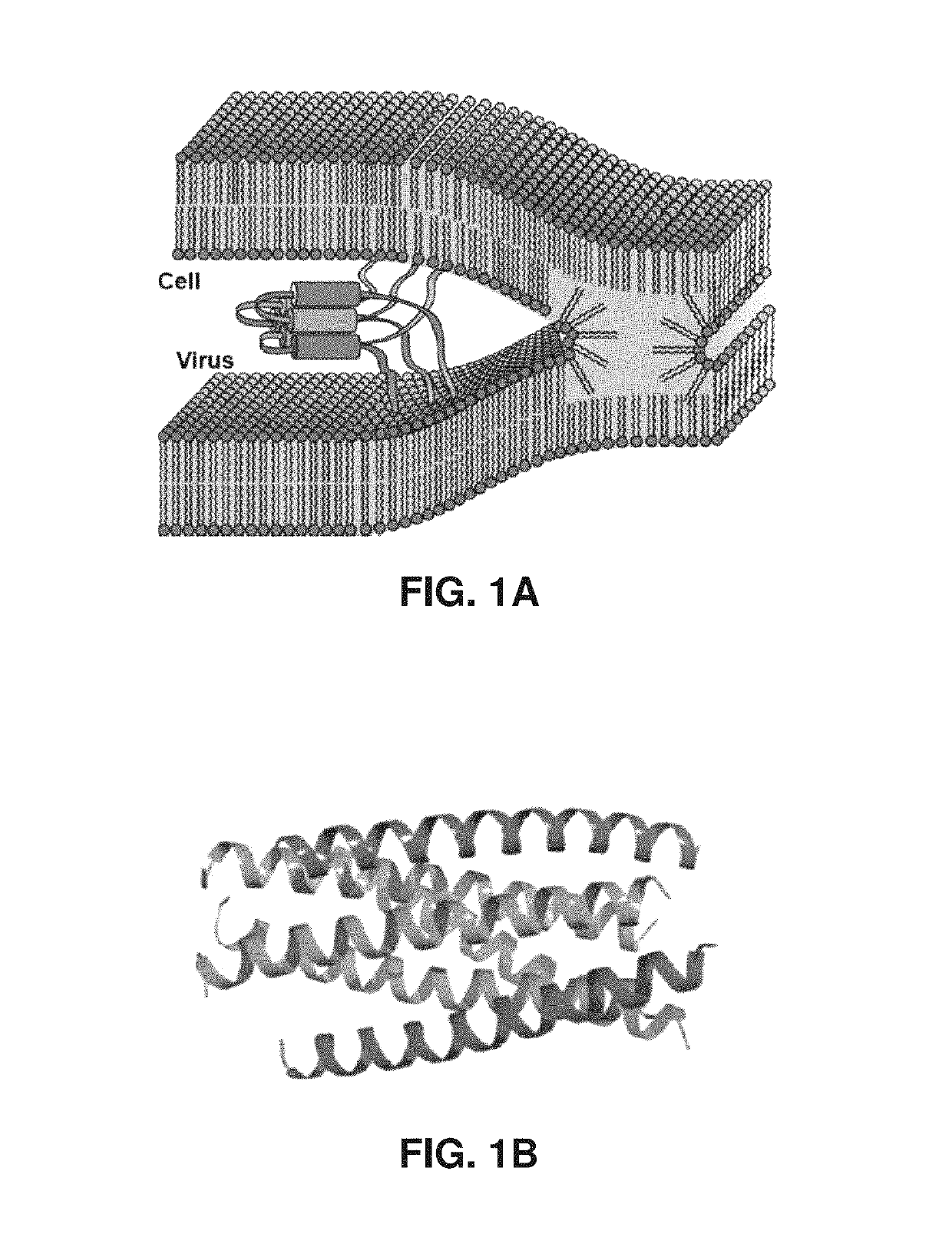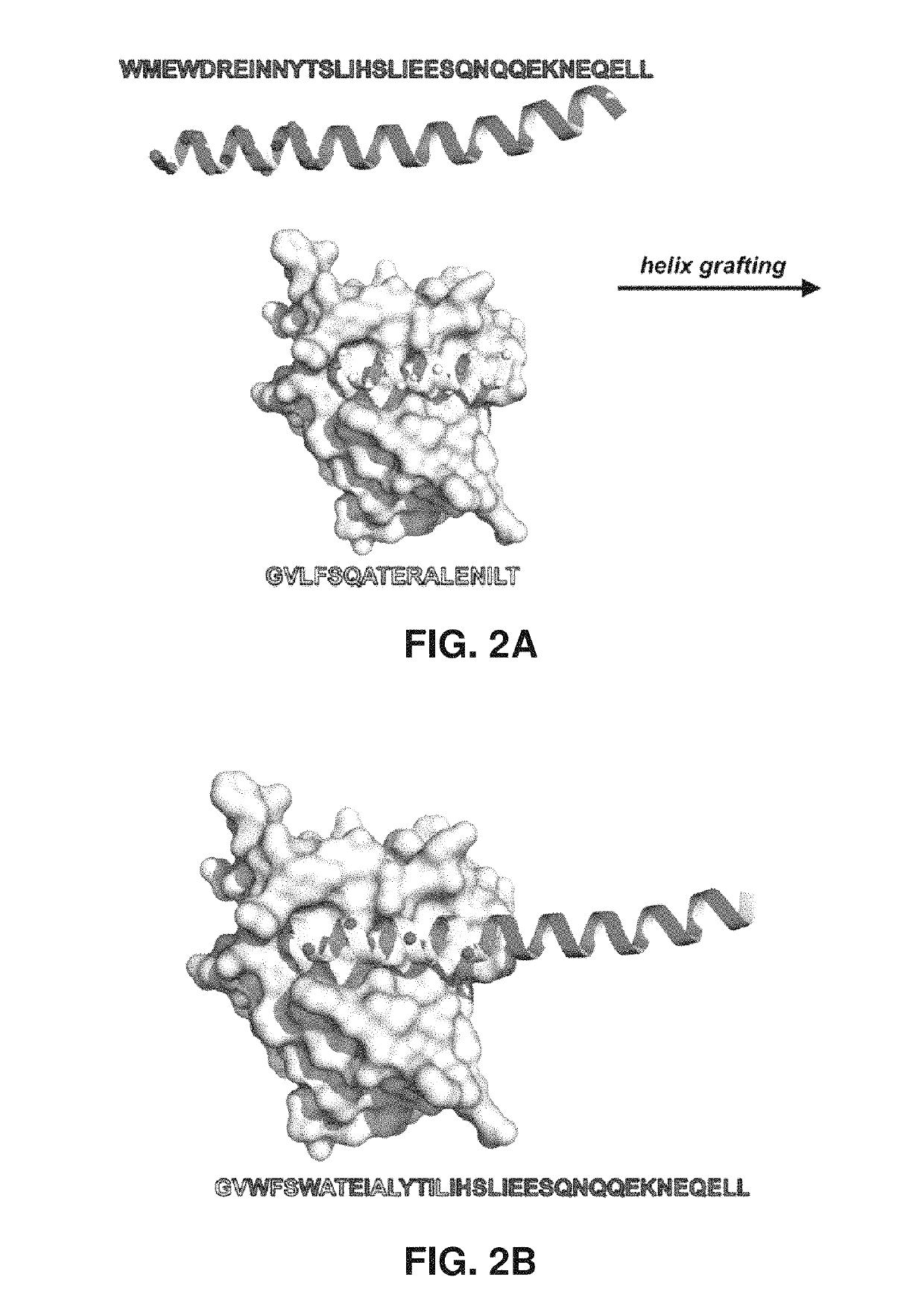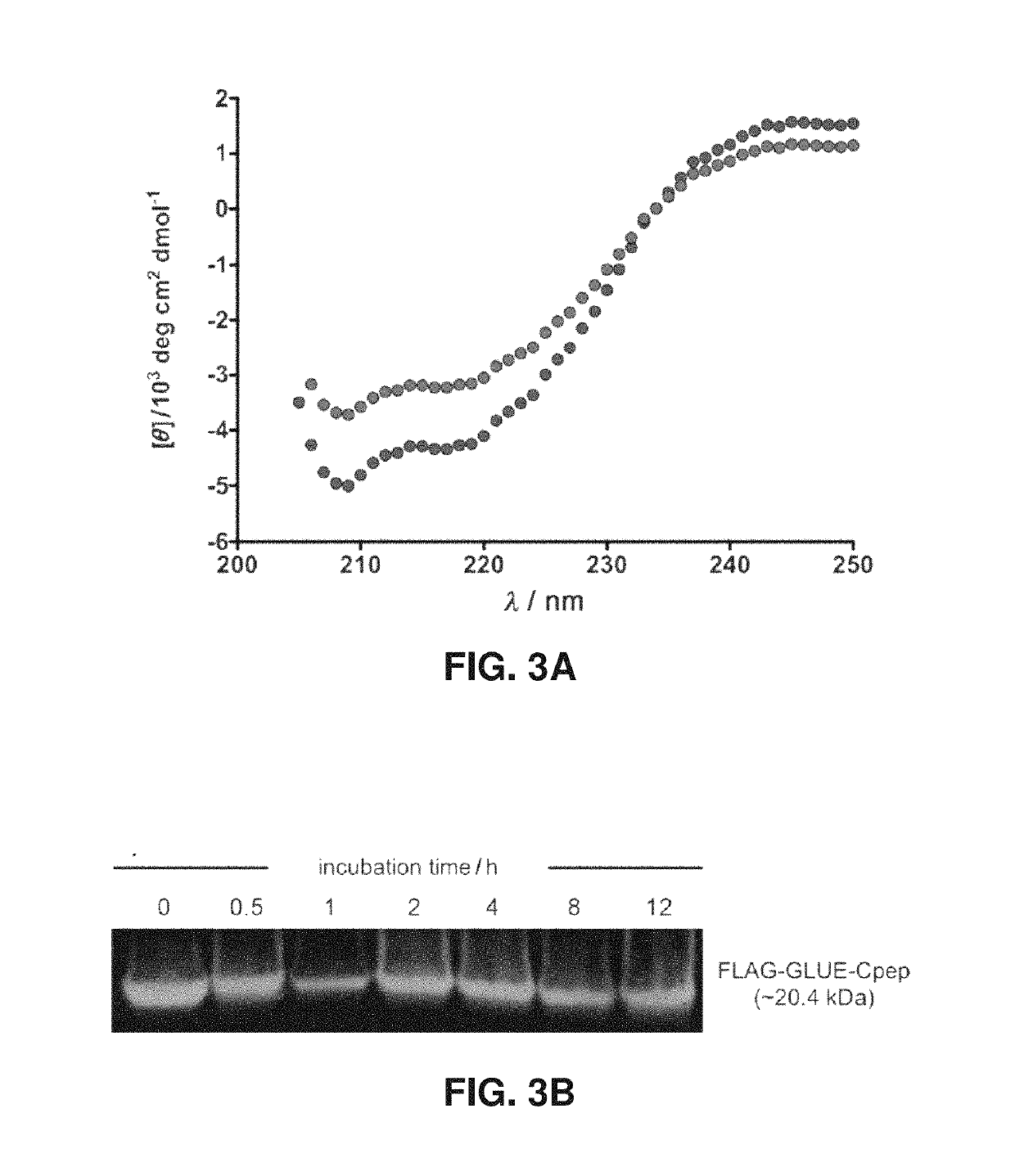Helix-grafted proteins as inhibitors of disease-relevant protein-protein interactions
a technology of helix graft and protein, which is applied in the direction of peptide/protein ingredients, fusions for specific cell targeting, peptide sources, etc., can solve the problems of limiting the potency of -helical peptides in vivo, cost of production and degradation, and still considerable drawbacks of -helical peptides
- Summary
- Abstract
- Description
- Claims
- Application Information
AI Technical Summary
Benefits of technology
Problems solved by technology
Method used
Image
Examples
example 1
Sticks to HIV: A Helix-Grafted GLUE Protein that Selectively Binds the HIV Gp41 N-Terminal Helical Region
[0098]The ongoing discovery of new drug therapies is of vital importance to human health. The traditional pharmaceutical paradigm for this discovery centers on small molecules binding to well-defined protein pockets, typified by enzyme active sites. However, there remain countless important targets largely beyond the reach of this strategy, principally due to extended contact surfaces. Such interactions are often collected under the heading of “protein-protein interactions” or PPIs.
[0099]A medicinally significant subset of these PPIs feature binding of one protein to an exposed helix on another, which has sparked considerable interest in the synthetic replication of helical epitopes as a route to novel therapeutics. Various strategies have been employed, including oligomeric organic scaffolds that project side chains along appropriate vectors, covalently constrained (or “stapled”...
example 2
as Therapeutics: An Alternative to Small Molecule Drug Design
[0127]Historically, the majority of therapeutic agents have been small organic molecules (1 This restraint significantly affects the number of molecular targets and corresponding therapeutics. In fact, ˜50% of current prescription drugs target just three gene families: G-protein-coupled receptors, nuclear receptors, and ion channels. A large part of the proteome remains untouched and lies beyond the reach of small molecules.
[0128]Protein-protein interactions (PPIs) are important for mediating cell function. Probing these interactions is of significant interest because it could lead to pharmaceutical development and a more in depth understanding of system biology Certain characteristics of PPIs make it difficult for small molecules to target them. The first, and possibly largest reason for this challenge is the size of PPIs. PPIs can create surfaces spanning ˜1500 to 3000 Å that are filled with polar and hydrophobic interac...
example 3
of Membrane Fusion in Enveloped Virus HIV-1
[0130]HIV-1 is a notorious human pathogen that affects ˜35 million people worldwide. HIV-1 is considered an enveloped virus because its nucelocapsid, which contains the viral genome, is surround by a lipid membrane. Membrane fusion of HIV-1 is mediated by the glycoprotein, gp160. gp160 is cleaved by a protease into two noncovalently bonded glycoproteins; gp120 and gp41. gp120, the surface subunit, is essential for recognizing the target cell's surface receptor. gp41, the transmembrane subunit, contains several regions that are responsible for the merge of the viral membrane and the target cell membrane (FIG. 9A). The fusion peptide, FP, is important for inducing viral entry, promoted by anchoring itself into the host membrane. X-ray crystallography shows that the C- and N-terminal heptad repeats (CHR and NHR) exist as a trimer of hairpins, in one of its final fusion conformations. NHR is able to self interact forming a central trimeric coil...
PUM
| Property | Measurement | Unit |
|---|---|---|
| temperatures | aaaaa | aaaaa |
| temperatures | aaaaa | aaaaa |
| temperatures | aaaaa | aaaaa |
Abstract
Description
Claims
Application Information
 Login to View More
Login to View More - R&D
- Intellectual Property
- Life Sciences
- Materials
- Tech Scout
- Unparalleled Data Quality
- Higher Quality Content
- 60% Fewer Hallucinations
Browse by: Latest US Patents, China's latest patents, Technical Efficacy Thesaurus, Application Domain, Technology Topic, Popular Technical Reports.
© 2025 PatSnap. All rights reserved.Legal|Privacy policy|Modern Slavery Act Transparency Statement|Sitemap|About US| Contact US: help@patsnap.com



